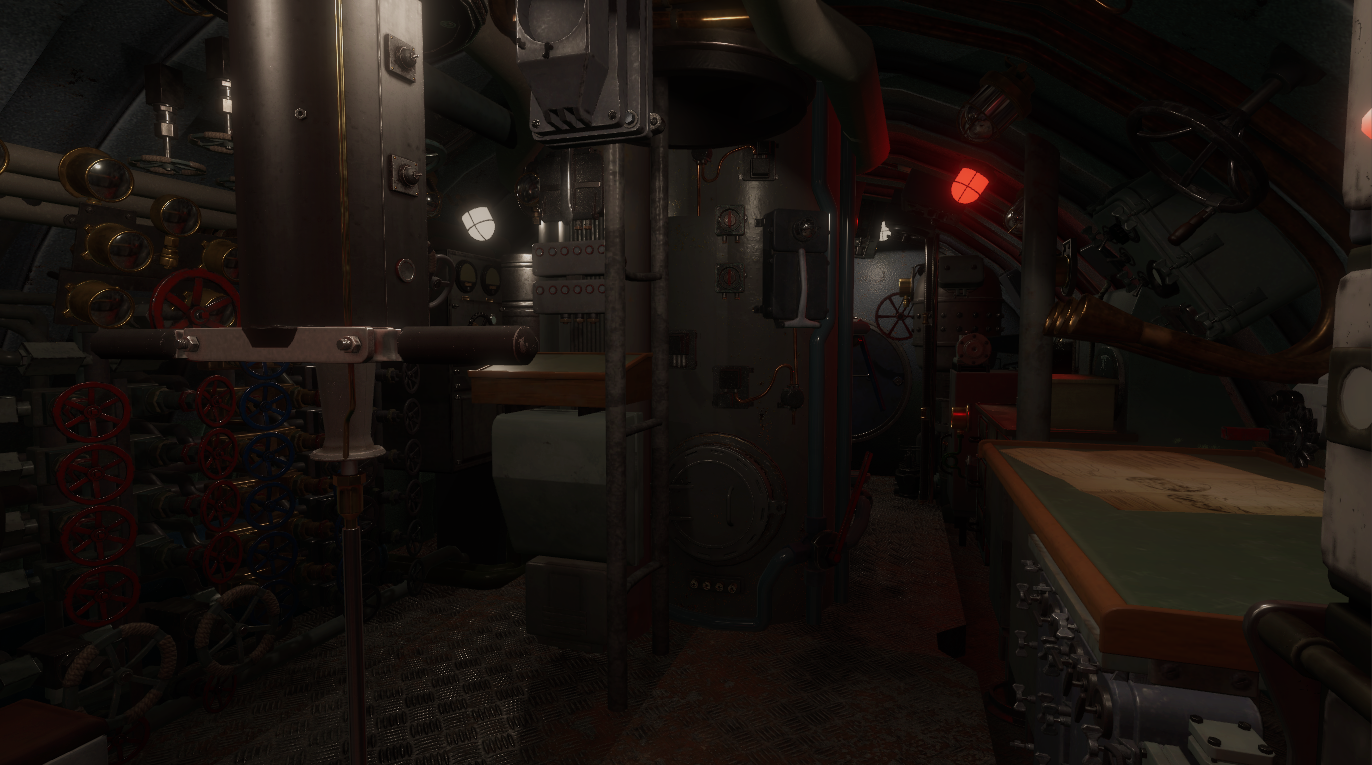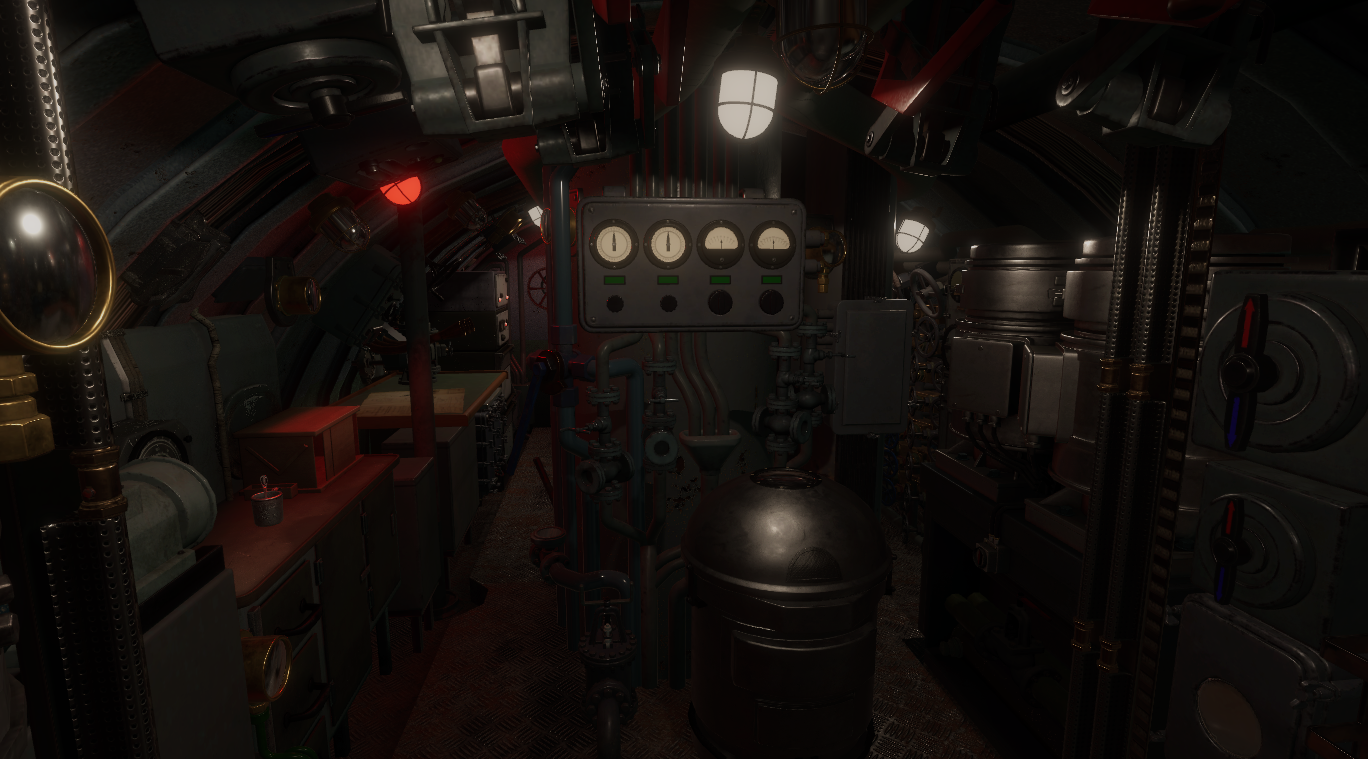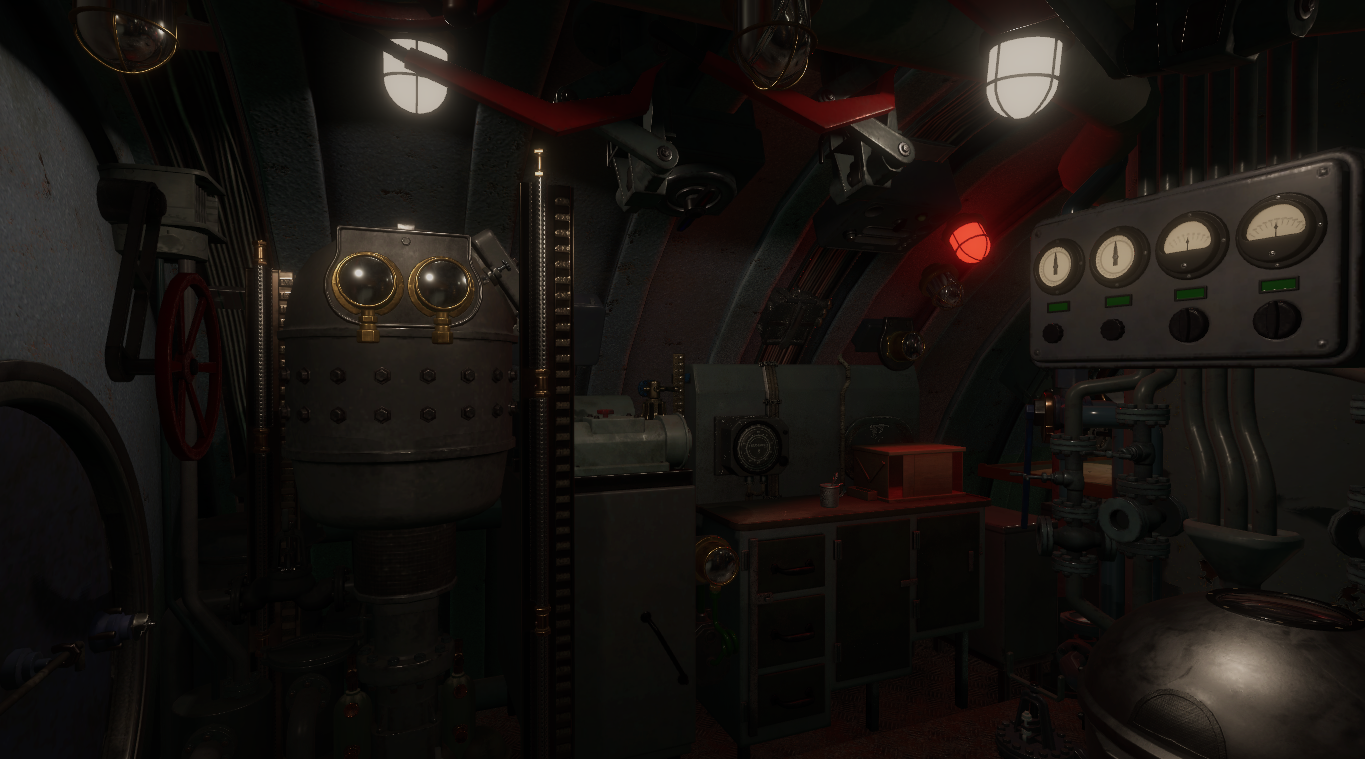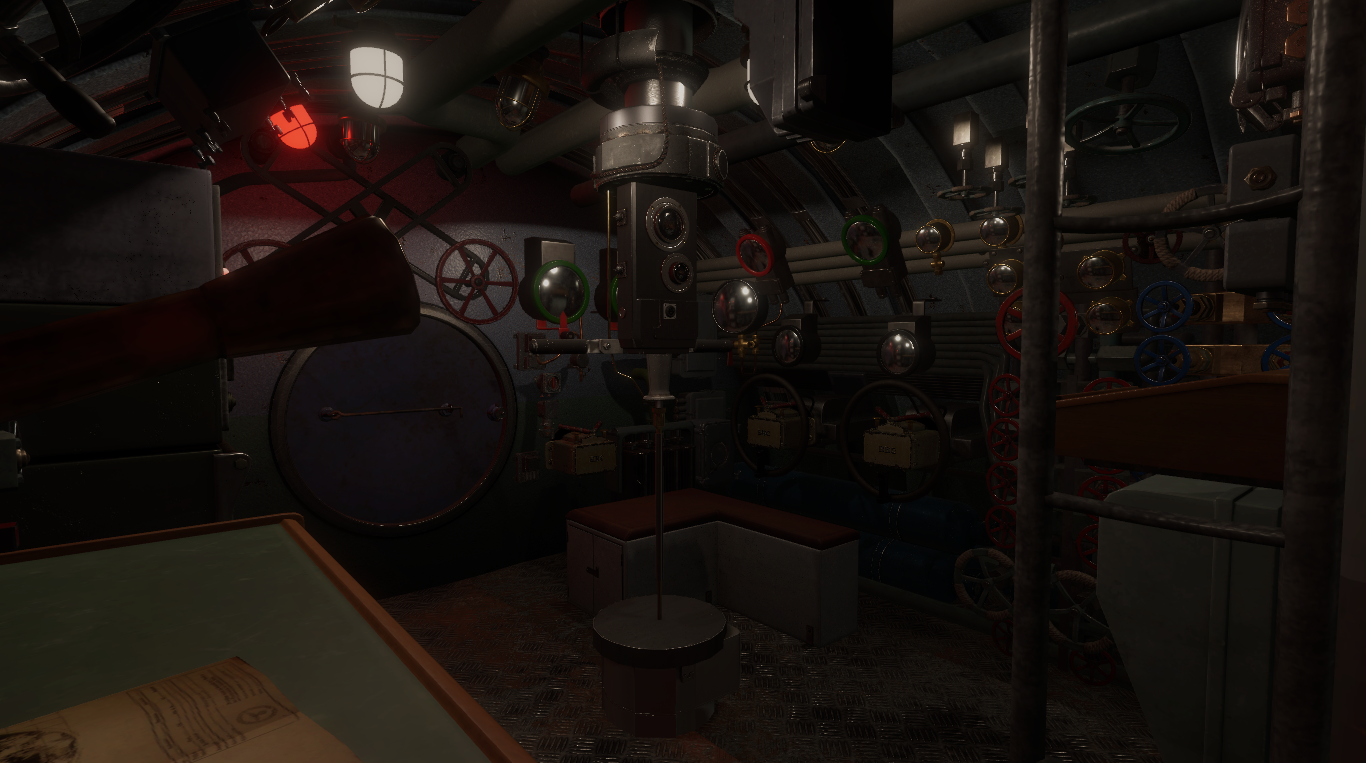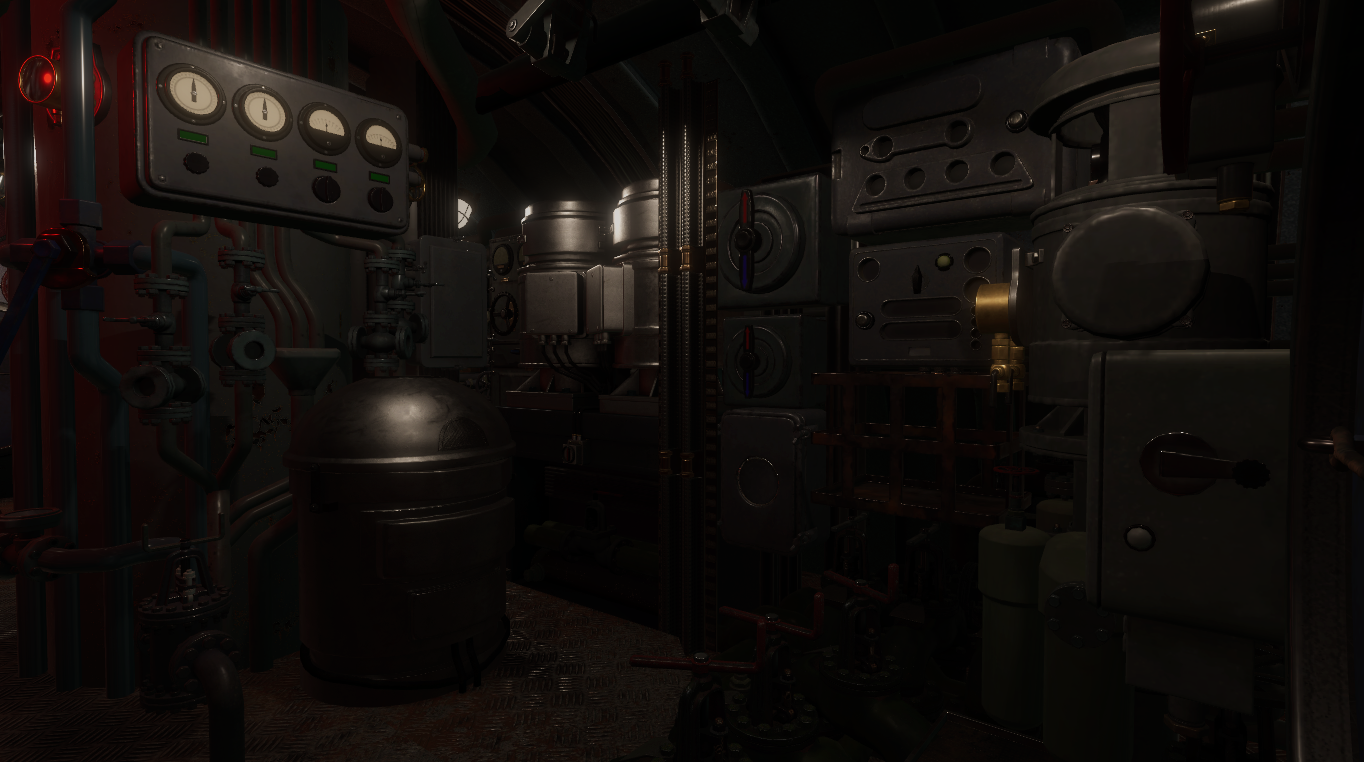You may not have first thought of submarine simulations when you theorized about the prospects for multiplayer virtual reality games. You probably thought about space-based flight, first-person shooters, and exploration-based puzzle games like the majority of our new industry. When you watch the trailer below though, it all makes sense.
In actuality, manning a submarine deep below the ocean’s surface feels about as applicable of a brave new frontier as the deep black sea of stars above our heads.
Atlantic Ghost is a currently in-development submarine simulation game that puts you and a crew of comrades into a submarine tasking you with controlling it and completing missions in a realistic simulation environment. We first got wind of the game when one of the creators, Karel Airapetjan, posted a brief gameplay video on Reddit. Naturally, we reached out to get more information.
“Back in 2008 I suddenly discovered that I liked submarine simulations,” Airapetjan explained over email. “Sadly there was no VR industry back then. Fast forward to August 2012 when the Oculus Kickstarter was announced and my first thought was that I wanted to build a virtual submarine for this and I pledged for the headset on the very first day. So as soon as we got our development kit we started to build a German TypeVII U-boat. At first it was going to be a single player only game with a short narrative…but everyone in the VR industry knows how fast things are changing. In 2014 we were lucky enough to get a tour of the Valve offices. We had a chance to try out their VR roomscale prototype and after coming out of that room we suddenly knew the direction that we wanted to take our game.”
A year later in 2015, the team got the chance to try the Oculus Toybox demo for an early taste of the prospects of social multiplayer VR and the concept for Atlantic Ghost started taking shape more clearly.
“Suddenly it all made perfect sense, working together as a team in a submarine,” Airapetjan said. “To this day I wonder why we did not think about this sooner.”
It’s not just strictly about multiplayer though, even if that is where the most enlightening experiences will likely happen. There is going to be a short story mode in single player still, including narrative explanations for the holographic ghosts you see in the screenshots and video that are alluded to in the title. The multiplayer experiences will be loosely tied to that story. You could even play the multiplayer segments alone if you wanted, but good luck managing an entire submarine alone by yourself. Dividing tasks and assigning duties is key to survival — similar to the gameplay flow of Star Trek: Bridge Crew.
“Before Bridge Crew was announced I was sitting on YouTube for hours and looked how people are playing Artemis Spaceship Bridge Simulator,” Airapetjan said. “I was fascinated by how the entire social aspect molded the gameplay experience. How different people and their body language affected the entire gameplay loop. The only problem was that to play this game you required all this equipment and people had to be in the same physical location. Thanks to VR, anyone can play these types of games in their home.”
Currently, the plan is to include only one single submarine: The Type VII. Despite the lack of diversity though, Airapetjan explains that the actual submarine is planned to be replicated with as close to 1:1 accuracy as possible. This is geared towards being a true simulation in VR, not just a gamified submarine combat experience — with some modern or “futuristic” as it were alterations for ease of gameplay.
“One good example is attacking the enemy ship,” Airapetjan elaborates. “We have a torpedo calculator but there is no good way to get readings from periscope in the game at the moment due to the low resolution of VR headsets. Mast height and bearing is hard to tell if you are looking trough a small hole on a texture that is rendered on a lower resolution through the HMD. So we do have some automated processes that help players out in this regard.”
In regards to actual game objectives, when playing in multiplayer the goal is to “sink as much tonnage as possible”. Elements such as the weather, time of day, convoy routes, and sub protections will be randomized each time you play. If those sound like superficial or cosmetic differences, they aren’t.
“Every element will affect the gameplay differently a bit,” Airapetjan said. “It is super hard to calculate torpedo attack in rough seas but it also makes your escape a bit easier since enemy sonars are receiving a messier signal and have to rely on bigger guesswork.”
Another big part of these types of simulation games is the prevalence of failure. Difficulty has to be high enough that you won’t win every time, but low enough that when you finally do succeed you feel like you earned it. In other words, they want to ensure that failure is still fun.
“We are trying to create a gameplay loop that contains three crucial elements: 1) Find and intercept convoy, 2) Plot your attack, 3) Evade enemy depth charges and escape. All these elements require communication and teamwork. You are free to do everything alone but having good companions makes everything so much more fun.”
A typical multiplayer session is expected to last 1-2 hours, so this won’t be a casual pick up and play experience by any means. That is unless you’re terrible, your captain makes bad calls, and you’re dead in under 30 minutes. That’s totally possible and perhaps likely at first.
None of the roles are locked down as gameplay elements like they are in Star Trek: Bridge Crew, anyone can do everything so it’s all about actual verbal communication and teamwork. This allows players to switch roles on the fly as a situation evolves.
Atlantic Ghost is currently in development for the HTC Vive as the primary target, but they hope to officially support the Oculus Rift and Touch as well. The only stipulation is that it requires constant 360-degree turning and quick movement, making it a challenge for non-360 setups.
The team is currently only three people right now, but they’ve been dabbling in VR creation ever since they got their DK1 and made “tons bad demos” to learn. No date is set yet, but it will be releasing a private testing session first, followed by Early Access on Steam, then a full release after that.


